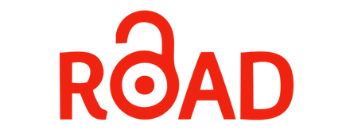MUATAN INFORMASI (INFORMATION CONTENTS) DARI KEBIJAKAN DIVIDEN
DOI:
https://doi.org/10.24002/kinerja.v7i2.795Abstract
This article has objective to describe information content of dividend policy, especially to foretell earnings growth. It has been oberved that an increase in the price of a stock, while a dividend cut generally leads to a stock price decline. However, many market observers point to the very high fraction of earnings retained (or low dividend payout ratio) as a sign that future earnings growth will be well above historical norm. In the real world, many complications exist that could confound the expected inverse relationship between current payouts and future earnings growth.
Keywords: dividend policy, earnings growth, payout ratio
References
Alli, Kasim L., A. Qayyum Khan dan Gabriel G. Ramirez, (1993), “Determinant of Corporate Dividend Policy: A Factor Analysis,” The Financial Review, Volume 24 No. 4 November.
Arnott, R. D. dan C. S. Asness (2001), “Does Dividend Policy Foretell Earnings Growth?” download dari www.ssrn.com , preliminary draft copy pada tanggal 20 Desember 2002.
Bernstein, P. L., (2001), “What Prompts Paradigm Shifts?” Financial Analysts Journal Nov/Dec.
Bhattacharya, S., (1979), “Imperfect Information, Dividend Policy, and the Bird-in-the-hand Fallacy,” Bell Journal of Economics 10.
Brennan, M. dan A. Thakor, (1990), “Shareholder Preferences and Dividend Policy,” Journal of Finance, September.
Chang, R. P. dan S. G. Rhee, (1990), “ Taxes and Dividends: The Impact of Personal Taxes on Corporate Dividend Policy and Capital Structure Decisions,” Financial Management, Summer.
Copeland, T. E., (1979), “Liquidity Changes Following Stock Splits,” Journal of Finance March.
Foster, G. (1986), Financial Statement Analysis, Englewood Cliffs, NJ: Prentice-Hall, edisi kedua.
Gordon, M. J., (1963), “Capital Investment and Financing Policy,” Journal of Finance, May.
Gordon, R. H. dan Bradford, D. F. (1980), “Taxation and The Stock Market Valuation of Capital Gains and Dividends: Theory and Empirical Results,” Journal of Public Economics 14.
Hartono, J., (2000), Teori Portofolio dan Analisis Investasi, edisi 2 BPFE Yogyakarta.
Lamont, O. (1998), “Earnings and Expected Returns,” Journal of Finance 53.
Levy, H. dan M. Sarnat (1990), Capital Investment and Financial Decision, Fourth edition, Prentice-Hall Incorporation.
Lintner, J. (1956), “Distribution of Incomes of Corporations Among Dividends, Retained Earnings, and Taxes” American Economic Review 46.
_________, (1962), “Dividends, Earnings Leverage, Stock Prices and the Supply of Capital to Corporations,” Review of Economics and Statistics, August.
Miller, M. H., dan Modigliani, F. (1961), “Dividend Policy, Growth, and the Valuation of Shares.” Journal of Business, Oktober.
Pettit, R. R., (1977), “Taxes, Transactions Costs and the Clientele Effect of Dividends,” The Journal of Financial Economics,” Dec.
Romon. F. (2000), “Contribution of Dividend Policy Stability to the Measurement of Dividend Announcement and Ex-Dividend Effects on the French Market.” Download dari www.ssrn.com, Institut d’ Administration des Enterprises tanggal 21 Juli 2003.
Ross, S. A., (1977), ”The Determination of Financial Structure: The Incentive-Signalling Approach,” The Bell Journal of Economics, Spring.
Sutrisno, (2001), “Analisis Faktor-Faktor yang Mempengaruhi Dividend Payout Ratio pada Perusahaan Publik di Indonesia,” Tema vol. 11 no. 1.
Van Horn, James C. (1986), Fundamentals of Financial Management, Seventh Edition, Prentice-Hall Inc.














